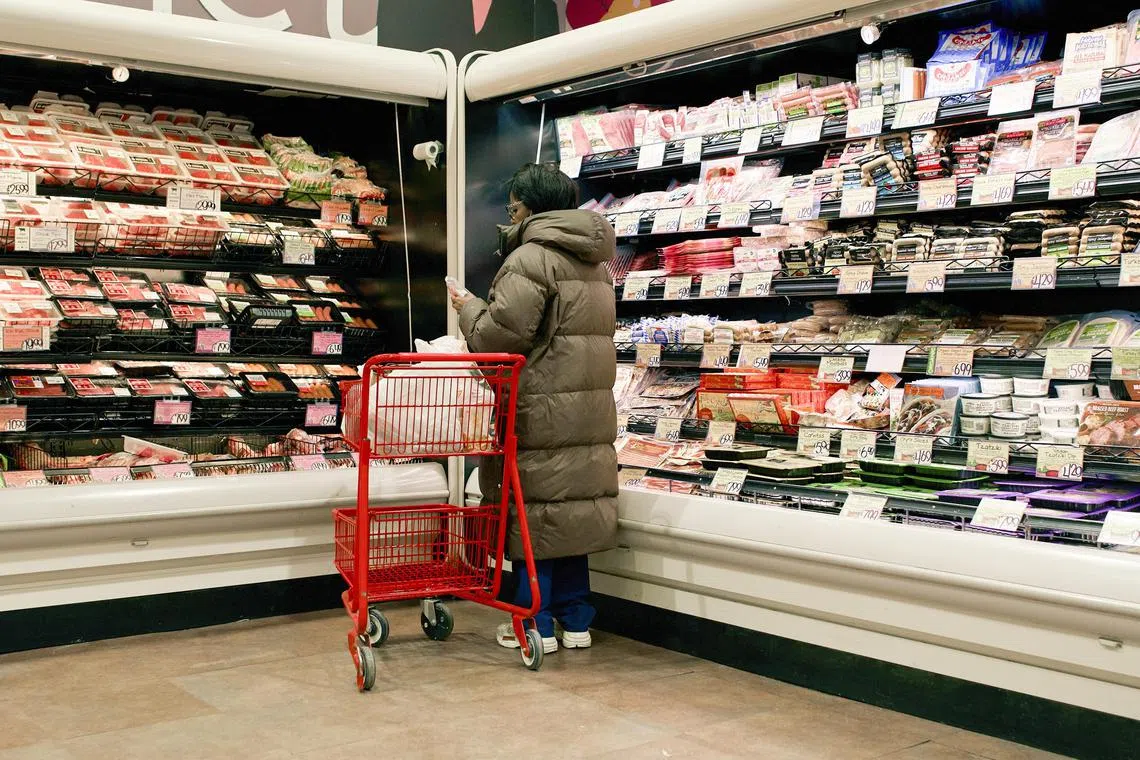More Fed policymakers point to higher rates in inflation fight
Sign up now: Get ST's newsletters delivered to your inbox

The US Federal Reserve has been fighting high inflation, which has affected everything from food to petrol prices.
PHOTO: NYTIMES
Follow topic:
WASHINGTON - Two Federal Reserve officials on Friday added to a chorus of US central bankers this week in signalling that interest rates will need to go higher in order to successfully quash inflation, although one guarded against inferring too much from recent unexpectedly-strong economic data.
“I think there’s a long way to go before we reach our 2 per cent inflation objective and I think we’ll have to continue to raise the federal funds rate until we see a lot more progress on that,” Fed governor Michelle Bowman said, during an appearance before a bankers association in Nashville, Tennessee, referring to an inflation rate that is still more than double the Fed’s goal by its own preferred measure.
“I don’t think we’re seeing what we need to be seeing, especially with inflation, those numbers have been jumping around a little bit,” Ms Bowman said. “We were seeing some progress in lowering inflation at the end of last year, but some of the data that we’re seeing early this year is not tracking with consistently lowering inflation in a way that I would like to see.”
She pointed to a surprisingly strong employment report for January in which more than half a million job gains were reported, and robust consumer spending data as evidence that the central bank’s actions are yet to have enough impact and also cautioned geopolitical risks could see energy costs rise once again.
The Fed at its last meeting raised the target federal funds rate by a quarter point, to a range between 4.5 per cent and 4.75 per cent, after a year of larger half point and three quarter point rate hikes. The bulk of Fed officials as of December saw rates moving to a peak of between 5 per cent and 5.25 per cent this year, a projection that will be updated at the Fed’s upcoming March 21-22 meeting.
On Thursday, two other Fed officials said the central bank likely should have lifted interest rates more than it did early this month, and warned that additional hikes in borrowing costs are essential to lower inflation back to desired levels, while other policymakers earlier in the week kept the door firmly open to a peak policy rate above 5.1 per cent.
Slow progress, no victory
In a separate appearance on Friday, Richmond Fed president Thomas Barkin also said the Fed will need to raise interest rates higher, although he noted he prefers to stick with slower, quarter percentage point increases and to decide on a higher or lower stopping point as the path of inflation becomes clearer.
“Moving inflation back to target will require more rate increases,” Mr Barkin told reporters following an event in Rosslyn, Virginia. “How many of those I think we’ll have to see... what you see is progress, but slow progress, you don’t see victory.”
Since last week’s Labour Department report showing the unemployment rate dropped in January to its lowest since 1969, and stronger-than-expected economic data all this week, betting in financial markets has coalesced around a “higher, for longer” path for US borrowing costs.
Futures tied to the Fed’s policy rate show traders now expect the central bank to raise interest rates another 75 basis points by the summer, bringing the benchmark rate to a 5.25 per cent-5.5 per cent range. A little over a week ago, financial markets did not expect the Fed policy rate to exceed 5 per cent.
Futures traders have also trimmed bets on rate cuts later this year, falling closer in line with Fed policymakers who have said they do not expect to ease policy at all in 2023.
That said, Mr Barkin warned against reading too much into the stellar job gains and robust retail sales figures reported in recent days.
“I am not taking as much signal from the data that we’ve gotten recently on the demand side as you might if you start to see it for multiple months,” Mr Barkin said.
He noted, for example, that the jobs added in January were partly the result of seasonal adjustments and the fact that companies apparently laid off fewer Christmas-season hires than would usually be the case – what Mr Barkin called a logical response to a tight labour market, reassuring him that the central bank is still making continued, albeit slow progress on inflation. REUTERS

